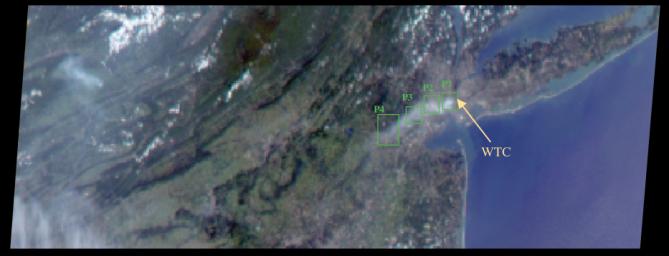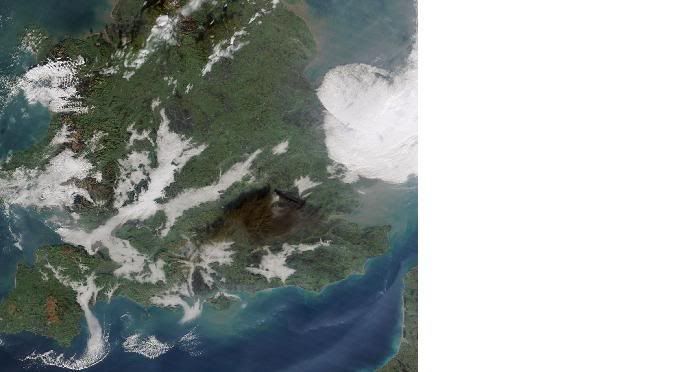Arkan_Wolfshade;1936951 wrote:http://en.wikipedia.org/wiki/World_Trade_Center
Height (m) 417
Height (ft) 1,368
Stories 110
http://www.house.gov/science/hot/wtc/wt ... TC_ch2.pdf Section
2.2.1.1
American Airlines Flight 11 struck the north face of WTC 1 approximately between the 94th and
98th floors
2.2.1.5
Construction of WTC 1 resulted in the storage of more than 4x10^11 joules of potential energy over the
1,368-foot height of the structure. Of this, approximately 8x10^9 joules of potential energy were stored in the
upper part of the structure, above the impact floors, relative to the lowest point of impact.
2.2.2.1
United Airlines Flight 175 struck the south face of WTC 2 approximately between the 78th and 84th
floors.
For WTC 1, the top 12 floors of the tower translates into 8x10^9 joules of the total 4x10^11 joules. So, the top ~10.9% of WTC 1 contained ~2% of the entire PE of WTC 1. Extrapolating this on to WTC 2 (since the above mentioned report does not specify the amount PE contained above the WTC 2 impact point) we get the following:
WTC 2 => top 26 floors => ~23.6% of WTC 2.
If ~10.9% of WTC 1 translates into 8x10^9 joules PE
Then ~23.6% of WTC 2 translates into N joules PE
Therefore 10.9/8*10^9 = 23.6/N
=> 10.9*N/8*10^9 = 23.6
=> 10.9*N = 23.6*(8*10^9)
=> N = 23.6*(8*10^9)/10.9
=> N = 17321100917.431192660550458715596
=> N = 17.3*10^9 joules PE
=> ~34.7% of the entire PE of WTC 2
What does this mean? It means for WTC 1, that ~2% (8x10^9 joules) of PE was converted to KE almost instantaneously upon structural failure at floors 94-98. It means for WTC 2, that ~34.7% (17.3*10^9 joules) of PE was converted to KE almost instantaneously upon structural failure at floors 78-84.
Okay, so Hoffman wants to talk kWh. What do our total, and our partials, convert into? (all per Google calculator)
4 x (10^11) joules = 111,111.111 kilowatt hours
8 x (10^9) joules = 2,222.22222 kilowatt hours
17.3 x (10^9) joules = 4,805.55556 kilowatt hours
Now, Hoffman cites
http://www.911-strike.com/powder.htm to support his claim that
all of the concrete was pulverized to 60 microns. On Hoffman's reference Russell states
The energy required to crush rock is roughly proportional to 1/sqrt(powder diameter), so the exact amount of energy required is critically dependent on the fineness of the powder. The energy required to reduce solid rock to 60 micron powder is about 20 kwh/ton:
http://www.elorantaassoc.com/eob97.htm
However, concrete is softer than rock, and a round number for the energy required to crush concrete is around 1.5 kwh/ton:
http://www.b-i-m.de/public/ibac/mueller.htm
Russell's use of 60 microns appears to come from the nature of his article; that being a response to Eric Hufschmid's "concrete physics problem" challenge
Russell does not link to Hufscmid's challenge, and, frankly, at this point I'm not going digging for it. If someone has it, and it is relevant, they can post it.
Now, before delving too far into our 60 microns, let's look at the makeup of the dust after the collapses:
http://www.epa.gov/wtc/panel/pdfs/meeke ... nalysis%22
First, I highly suggest reading the short paper, as it describes the EPA's methodology in a very detailed manner.
Component analysis for the six WTC bulk samples is summarized in Table 1 and Figures 2 - 7. All of the samples show three primary components – gypsum, phases compatible with concrete, and MMVF. The additional particle types shown in Table 1 were found in most samples. The data demonstrate that the most consistent particle-type abundance ratios occur within the MMVF, i.e., slag wool, rock wool, and soda-lime glass. In all samples, slag wool is the dominant MMVF component while rock wool and soda-lime glass fibers occur in all samples at similar relative abundances below approximately 10 to less than 1 percent total MMVF (Table 1).
Table 1. Range in area percent of major and minor components for all samples.
Particle Type Comment Percent Range, Outdoor Percent Range, Indoor
Gypsum Includes all Ca sulfate particles 26.3 – 53.3 63.3 – 63.7
Concrete All phases compatible with hydrated cement 19.3 – 30.8 14.0 – 21.0
MMVF* Total 20.3 – 40.6 9.5 – 19.2
<snip>
Wait. You read that too fast. Let me reiterate
Particle Type
Gypsum
Percent Range, Outdoor
26.3 – 53.3
Percent Range, Indoor
63.3 – 63.7
Particle Type
Concrete
Percent Range, Outdoor
19.3 – 30.8
Percent Range, Indoor
14.0 – 21.0
Let me put it another way. In the EPA's sample, drywall dust accounted for more than ~15% more of the outdoor sample than concrete; and account for more than ~46% more of the indoor sample.
The bulk of the cloud seen from the collapse of the towers is drywall dust not concrete dust. Hoffman is starting from a flawed premise.
QED.
I would also like to point of that the claim of 1.5 kWh/ton concrete is taken out of context
Quote:
At the moment digestion rates of around 60 % can be attained with electro-mechanical crushing methods (sonic impulse). This method is nevertheless not competitive compared to common mechanical crushing methods (impact crusher: roughly 1.5 kWh/t concrete) because of its high energy consumption (around 12 kWh/t).
The 1.5 kWh/t is the energy consumption of the impact crusher, not a calculated value of the amount of energy to pulverize the concrete in an ideal setting.







